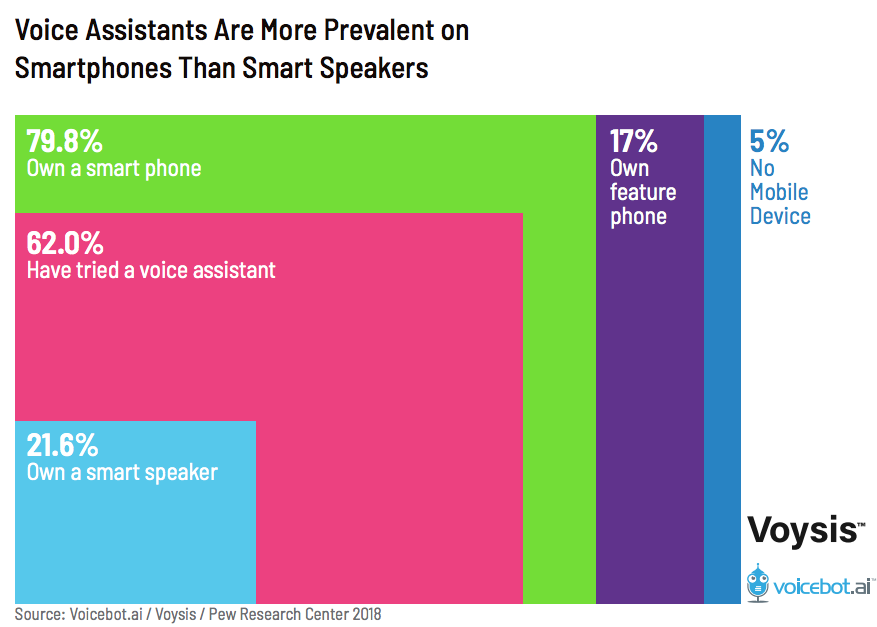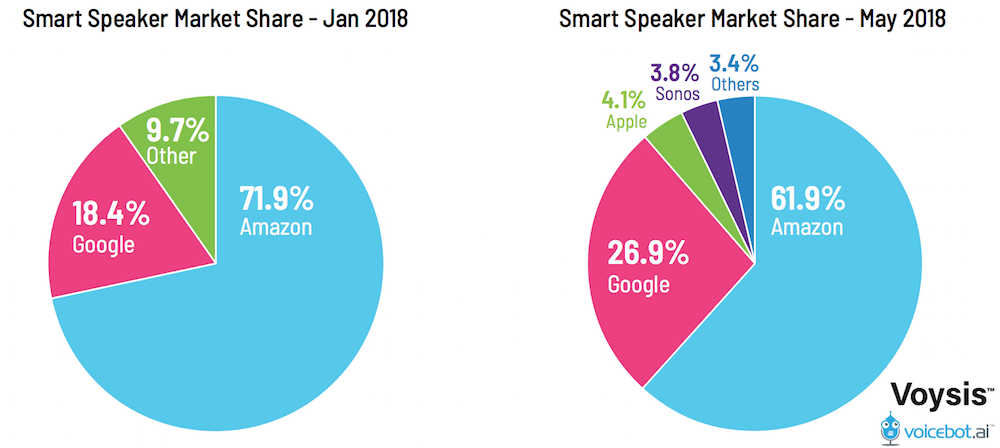 So far, voice assistants are commonly used to access audio entertainment, but as the technology advances, the next step could involve commerce and shopping. Voicebot and Voysis have collaborated on a report pointing to the future of voice shopping. The duo conducted online surveys of 1,203 U.S. adults aged 18 and up for the results. The report methodology includes downward adjustments for some totals to adjust for the surveys only reaching the online adult population, although findings focused on online shopping, smartphones, and smart speakers were not changed.
So far, voice assistants are commonly used to access audio entertainment, but as the technology advances, the next step could involve commerce and shopping. Voicebot and Voysis have collaborated on a report pointing to the future of voice shopping. The duo conducted online surveys of 1,203 U.S. adults aged 18 and up for the results. The report methodology includes downward adjustments for some totals to adjust for the surveys only reaching the online adult population, although findings focused on online shopping, smartphones, and smart speakers were not changed.
The analysis predicts that, due to the high rates of ownership (79.8%), many people will first be introduced to voice assistant shopping on smartphones. There’s still a long way to go for voice on smartphones to become commonplace. Although 74.4% said they have ever used a voice assistant on that device, only 20.5% say they do so monthly. Apple’s Siri is the most widely used voice assistant on smartphones, with a 45.64% share, followed by Google Assistant at 28.7% and Amazon Alexa at 13.2%.
 Smart speakers represent a newer segment in terms of audience, with 21.6% ownership, but one where voice is more immediately central to use. As of May 2018, smart speaker ownership reached 50 million, and the rates have been increasing quickly in recent months. Almost two-thirds (65%) of smart speaker owners use them at least weekly and 40% do so at least daily. The report also noted that smart speaker owners are more likely to take advantage of voice technology on their smartphones.
Smart speakers represent a newer segment in terms of audience, with 21.6% ownership, but one where voice is more immediately central to use. As of May 2018, smart speaker ownership reached 50 million, and the rates have been increasing quickly in recent months. Almost two-thirds (65%) of smart speaker owners use them at least weekly and 40% do so at least daily. The report also noted that smart speaker owners are more likely to take advantage of voice technology on their smartphones.
Amazon continues to have the lion’s share of the smart speaker market, with a 61.9% share as of May 2018. Google’s portion has grown from 18.4% in January to 26.9% in May. Apple now has 4.1% and Sonos has 3.8%.

At this early stage, only one in five respondents said they have ever tried voice shopping, although the rate rises to about one in four among smart speaker owners. The report broke down additional demographics around the people who have tried the activity: 63% are male and 34.5% are ages 18-29. When asked about the pros and cons of the practice, trust and comfort were paramount. A third (31.72%) said “I’m not comfortable shopping by voice,” making it the top reason respondents dislike voice shopping. “I don’t trust smart speakers with payment information” took a 23.35% share of responses. On the positive side, 27.31% appreciated the hands-free shopping, and 20.7% liked being able to shop while doing other things.
